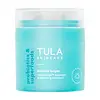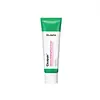What's inside
What's inside
 Key Ingredients
Key Ingredients

 Benefits
Benefits

 Concerns
Concerns

 Ingredients Side-by-side
Ingredients Side-by-side

Water
Skin ConditioningGlycerin
HumectantButylene Glycol
HumectantDiglycerin
HumectantMethyl Gluceth-20
HumectantNiacinamide
SmoothingPentylene Glycol
Skin ConditioningLactococcus Ferment Lysate
Skin Conditioning3-O-Ethyl Ascorbic Acid
Skin ConditioningBetula Alba Juice
AstringentPanthenol
Skin ConditioningTetrahydrodiferuloylmethane
AntioxidantBeta Vulgaris Root Extract
Skin ConditioningAscorbyl Glucoside
AntioxidantInulin
Skin ConditioningMandelic Acid
AntimicrobialLactic Acid
BufferingCurcuma Longa Root Extract
MaskingHippophae Rhamnoides Fruit Extract
Skin ConditioningCopper Gluconate
Skin ConditioningMagnesium Aspartate
Skin ConditioningZinc Gluconate
Skin ConditioningPrunus Armeniaca Kernel Oil
MaskingLactobacillus Ferment
Skin ConditioningLactobacillus
Skin ConditioningAlpha-Glucan Oligosaccharide
CleansingTromethamine
BufferingSodium Polyacrylate Starch
AbsorbentCarbomer
Emulsion StabilisingAcrylates/C10-30 Alkyl Acrylate Crosspolymer
Emulsion StabilisingXanthan Gum
EmulsifyingAmmonium Acryloyldimethyltaurate/Vp Copolymer
Ethylhexylglycerin
Skin ConditioningTriethyl Citrate
Masking1,2-Hexanediol
Skin ConditioningPolymnia Sonchifolia Root Juice
Skin ConditioningCitrus Aurantium Dulcis Peel Oil
MaskingHelianthus Annuus Seed Oil
EmollientMaltodextrin
AbsorbentSodium Benzoate
MaskingSodium Chloride
MaskingCitrus Reticulata Peel Oil
MaskingEugenia Caryophyllus Flower Extract
AstringentVanilla Planifolia Fruit Extract
Skin ConditioningPhenoxyethanol
PreservativeTocopherol
AntioxidantCI 19140
Cosmetic ColorantCI 17200
Cosmetic ColorantWater, Glycerin, Butylene Glycol, Diglycerin, Methyl Gluceth-20, Niacinamide, Pentylene Glycol, Lactococcus Ferment Lysate, 3-O-Ethyl Ascorbic Acid, Betula Alba Juice, Panthenol, Tetrahydrodiferuloylmethane, Beta Vulgaris Root Extract, Ascorbyl Glucoside, Inulin, Mandelic Acid, Lactic Acid, Curcuma Longa Root Extract, Hippophae Rhamnoides Fruit Extract, Copper Gluconate, Magnesium Aspartate, Zinc Gluconate, Prunus Armeniaca Kernel Oil, Lactobacillus Ferment, Lactobacillus, Alpha-Glucan Oligosaccharide, Tromethamine, Sodium Polyacrylate Starch, Carbomer, Acrylates/C10-30 Alkyl Acrylate Crosspolymer, Xanthan Gum, Ammonium Acryloyldimethyltaurate/Vp Copolymer, Ethylhexylglycerin, Triethyl Citrate, 1,2-Hexanediol, Polymnia Sonchifolia Root Juice, Citrus Aurantium Dulcis Peel Oil, Helianthus Annuus Seed Oil, Maltodextrin, Sodium Benzoate, Sodium Chloride, Citrus Reticulata Peel Oil, Eugenia Caryophyllus Flower Extract, Vanilla Planifolia Fruit Extract, Phenoxyethanol, Tocopherol, CI 19140, CI 17200
Water
Skin ConditioningDipropylene Glycol
HumectantCetearyl Alcohol
EmollientPropanediol
SolventPolyglyceryl-3 Methylglucose Distearate
EmulsifyingPhytosteryl Isostearyl Dimer Dilinoleate
EmollientButylene Glycol
HumectantCaprylic/Capric Triglyceride
MaskingButyrospermum Parkii Butter
Skin ConditioningDicaprylyl Ether
EmollientNiacinamide
SmoothingGlyceryl Stearate Se
EmulsifyingPentylene Glycol
Skin ConditioningSynthetic Beeswax
Emulsion StabilisingDiglycerin
HumectantCetyl Ethylhexanoate
EmollientVinyldimethicone
1,2-Hexanediol
Skin ConditioningMacadamia Integrifolia Seed Oil
Skin ConditioningTheobroma Cacao Extract
Skin ConditioningCentella Asiatica Leaf Extract
Skin ConditioningCetearyl Olivate
Glycerin
HumectantAllantoin
Skin ConditioningAsiaticoside
AntioxidantMadecassic Acid
Skin ConditioningAsiatic Acid
Skin ConditioningAdenosine
Skin ConditioningPolyglyceryl-4 Oleate
EmulsifyingSodium Stearoyl Glutamate
CleansingPalmitoyl Tripeptide-8
Skin ConditioningSorbitan Olivate
EmulsifyingHydroxyethyl Acrylate/Sodium Acryloyldimethyl Taurate Copolymer
Emulsion StabilisingXanthan Gum
EmulsifyingSodium Surfactin
CleansingCarbomer
Emulsion StabilisingTromethamine
BufferingIsopentyldiol
HumectantDextrin
AbsorbentDextran
Sorbitan Isostearate
EmulsifyingTrisodium Ethylenediamine Disuccinate
Tocopherol
AntioxidantPhenoxyethanol
PreservativeCI 19140
Cosmetic ColorantCI 42090
Cosmetic ColorantWater, Dipropylene Glycol, Cetearyl Alcohol, Propanediol, Polyglyceryl-3 Methylglucose Distearate, Phytosteryl Isostearyl Dimer Dilinoleate, Butylene Glycol, Caprylic/Capric Triglyceride, Butyrospermum Parkii Butter, Dicaprylyl Ether, Niacinamide, Glyceryl Stearate Se, Pentylene Glycol, Synthetic Beeswax, Diglycerin, Cetyl Ethylhexanoate, Vinyldimethicone, 1,2-Hexanediol, Macadamia Integrifolia Seed Oil, Theobroma Cacao Extract, Centella Asiatica Leaf Extract, Cetearyl Olivate, Glycerin, Allantoin, Asiaticoside, Madecassic Acid, Asiatic Acid, Adenosine, Polyglyceryl-4 Oleate, Sodium Stearoyl Glutamate, Palmitoyl Tripeptide-8, Sorbitan Olivate, Hydroxyethyl Acrylate/Sodium Acryloyldimethyl Taurate Copolymer, Xanthan Gum, Sodium Surfactin, Carbomer, Tromethamine, Isopentyldiol, Dextrin, Dextran, Sorbitan Isostearate, Trisodium Ethylenediamine Disuccinate, Tocopherol, Phenoxyethanol, CI 19140, CI 42090
 Reviews
Reviews

Ingredients Explained
These ingredients are found in both products.
Ingredients higher up in an ingredient list are typically present in a larger amount.
1,2-Hexanediol is a synthetic liquid and another multi-functional powerhouse.
It is a:
- Humectant, drawing moisture into the skin
- Emollient, helping to soften skin
- Solvent, dispersing and stabilizing formulas
- Preservative booster, enhancing the antimicrobial activity of other preservatives
Butylene Glycol (or BG) is used within cosmetic products for a few different reasons:
Overall, Butylene Glycol is a safe and well-rounded ingredient that works well with other ingredients.
Though this ingredient works well with most skin types, some people with sensitive skin may experience a reaction such as allergic rashes, closed comedones, or itchiness.
Learn more about Butylene GlycolCarbomer is a polymer of acrylic acid. Its main role is to create a gel consistency.
A high amount of carbomer can cause pilling or balling up of products. Don't worry, most products contain 1% or less of carbomer.
CI 19140 is also known as Tartrazine. Tartrazine is a synthetic dye used in cosmetics, foods, and medicine to add a yellow color.
Tartrazine is created from petroleum and is water-soluble.
Some people may experience allergies from this dye, especially asthmatics and those with an aspirin intolerance.
Learn more about CI 19140Diglycerin is a humectant. It is derived from glycerin, which is naturally found in your skin.
As a humectant, it helps draw moisture to the skin from the air.
Glycerin is already naturally found in your skin. It helps moisturize and protect your skin.
A study from 2016 found glycerin to be more effective as a humectant than AHAs and hyaluronic acid.
As a humectant, it helps the skin stay hydrated by pulling moisture to your skin. The low molecular weight of glycerin allows it to pull moisture into the deeper layers of your skin.
Hydrated skin improves your skin barrier; Your skin barrier helps protect against irritants and bacteria.
Glycerin has also been found to have antimicrobial and antiviral properties. Due to these properties, glycerin is often used in wound and burn treatments.
In cosmetics, glycerin is usually derived from plants such as soybean or palm. However, it can also be sourced from animals, such as tallow or animal fat.
This ingredient is organic, colorless, odorless, and non-toxic.
Glycerin is the name for this ingredient in American English. British English uses Glycerol/Glycerine.
Learn more about GlycerinNiacinamide is a multitasking form of vitamin B3 that strengthens the skin barrier, reduces pores and dark spots, regulates oil, and improves signs of aging.
And the best part? It's gentle and well-tolerated by most skin types, including sensitive and reactive skin.
You might have heard of "niacin flush", or the reddening of skin that causes itchiness. Niacinamide has not been found to cause this.
In very rare cases, some individuals may not be able to tolerate niacinamide at all or experience an allergic reaction to it.
If you are experiencing flaking, irritation, and dryness with this ingredient, be sure to double check all your products as this ingredient can be found in all categories of skincare.
When incorporating niacinamide into your routine, look out for concentration amounts. Typically, 5% niacinamide provides benefits such as fading dark spots. However, if you have sensitive skin, it is better to begin with a smaller concentration.
When you apply niacinamide to your skin, your body converts it into nicotinamide adenine dinucleotide (NAD). NAD is an essential coenzyme that is already found in your cells as "fuel" and powers countless biological processes.
In your skin, NAD helps repair cell damage, produce new healthy cells, support collagen production, strengthen the skin barrier, and fight environmental stressors (like UV and pollution).
Our natural NAD levels start to decline with age, leading to slower skin repair, visible aging, and a weaker skin barrier. By providing your skin niacinamide, you're recharging your skin's NAD levels. This leads to stronger, healthier, and younger looking skin.
Another name for vitamin B3 is nicotinamide. This vitamin is water-soluble and our bodies don't store it. We obtain Vitamin B3 from either food or skincare. Meat, fish, wheat, yeast, and leafy greens contain vitamin B3.
The type of niacinamide used in skincare is synthetically created.
Learn more about NiacinamidePentylene glycol is typically used within a product to thicken it. It also adds a smooth, soft, and moisturizing feel to the product. It is naturally found in plants such as sugar beets.
The hydrophilic trait of Pentylene Glycol makes it a humectant. As a humectant, Pentylene Glycol helps draw moisture from the air to your skin. This can help keep your skin hydrated.
This property also makes Pentylene Glycol a great texture enhancer. It can also help thicken or stabilize a product.
Pentylene Glycol also acts as a mild preservative and helps to keep a product microbe-free.
Some people may experience mild eye and skin irritation from Pentylene Glycol. We always recommend speaking with a professional about using this ingredient in your routine.
Pentylene Glycol has a low molecular weight and is part of the 1,2-glycol family.
Learn more about Pentylene GlycolPhenoxyethanol is a preservative that has germicide, antimicrobial, and aromatic properties. Studies show that phenoxyethanol can prevent microbial growth. By itself, it has a scent that is similar to that of a rose.
It's often used in formulations along with Caprylyl Glycol to preserve the shelf life of products.
Tocopherol (also known as Vitamin E) is a common antioxidant used to help protect the skin from free-radicals and strengthen the skin barrier. It's also fat soluble - this means our skin is great at absorbing it.
Vitamin E also helps keep your natural skin lipids healthy. Your lipid skin barrier naturally consists of lipids, ceramides, and fatty acids. Vitamin E offers extra protection for your skin’s lipid barrier, keeping your skin healthy and nourished.
Another benefit is a bit of UV protection. Vitamin E helps reduce the damage caused by UVB rays. (It should not replace your sunscreen). Combining it with Vitamin C can decrease sunburned cells and hyperpigmentation after UV exposure.
You might have noticed Vitamin E + C often paired together. This is because it is great at stabilizing Vitamin C. Using the two together helps increase the effectiveness of both ingredients.
There are often claims that Vitamin E can reduce/prevent scarring, but these claims haven't been confirmed by scientific research.
Learn more about TocopherolTromethamine helps balance the pH and improve the texture of a product. It is synthetically created.
As an emulsifier, Tromethamine prevents oil and water ingredients from separating. This helps stabilize the product and elongate a product's shelf life. Tromethamine also makes a product thicker.
Tromethamine helps balance the pH level of a product. Normal pH level of skin is slightly acidic (~4.75-5.5). The acidity of our skin is maintained by our glands and skin biome. Being slightly acidic allows our skin to create an "acid mantle". This acid mantle is a thin barrier that protects our skin from bacteria and contaminants.
Oral Tromethanmine is an anti-inflammatory drug but plays the role of masking, adding fragrance, and/or balancing pH in skincare.
1,3-Propanediol, 2-amino-2-(hydroxymethyl)-
Learn more about TromethamineWater. It's the most common cosmetic ingredient of all. You'll usually see it at the top of ingredient lists, meaning that it makes up the largest part of the product.
So why is it so popular? Water most often acts as a solvent - this means that it helps dissolve other ingredients into the formulation.
You'll also recognize water as that liquid we all need to stay alive. If you see this, drink a glass of water. Stay hydrated!
Learn more about WaterXanthan gum is used as a stabilizer and thickener within cosmetic products. It helps give products a sticky, thick feeling - preventing them from being too runny.
On the technical side of things, xanthan gum is a polysaccharide - a combination consisting of multiple sugar molecules bonded together.
Xanthan gum is a pretty common and great ingredient. It is a natural, non-toxic, non-irritating ingredient that is also commonly used in food products.
Learn more about Xanthan Gum